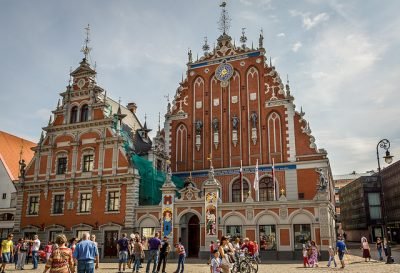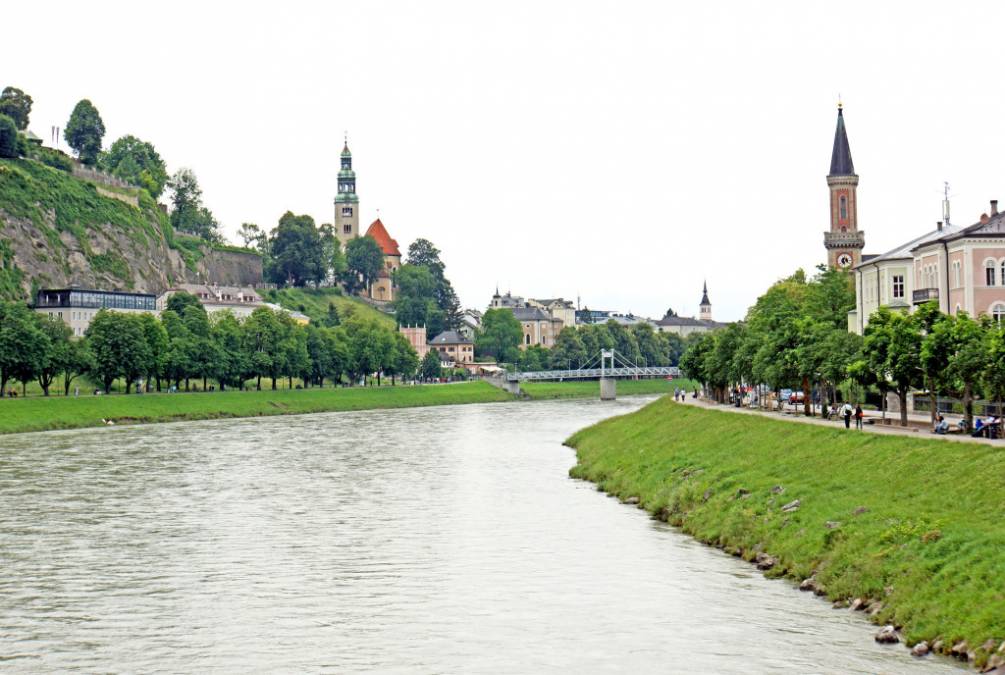From Kirkenes to the Black Sea in about 10,400 km.
Eurovelo 13 runs along the perimeter of the old area of Soviet influence by touching Norway, Finland, Estonia, Latvia, Lithuania, Russia, Poland, Germany, Czech Republic, Slovakia, Austria, Hungary, Croatia, Serbia, Macedonia, Romania and Bulgaria.

Riga
Always cycling on bike paths, secondary roads or greenways, you need to pay particular attention only to the stretches near the big cities.
The route starts at Kirkenes at the eastern end of Norway and immediately runs south along the border separating Finland from Russia. This is the territory of the Sami, a populace with typically nomadic customs and lifestyles. The Finnish landscape has vast forests and innumerable lakes, rivers and canyons where pedaling is really enjoyable.
At this point the official route includes a short section on Russian territory. But even the route’s organizers do not recommend it because local authorities require a lot of visas and permits. Alternatively you can reach Estonia by sea by taking a ferry from Helsinki losing however the wonderful city of St. Petersburg whose historic center has been declared World Heritage by UNESCO.
When you arrive in Tallin, you will mostly follow the national bicycle trails linking the three Baltic republics. These are the first states declared independent of the Soviet Union (1991). Eurovelo 13 then crosses Riga and Klapeda and then enters the oblast of Kaliningrad, a Russian enclave in the territory once occupied by German East Prussia. At the end of World War II, hunting the German inhabitants, this piece of land was split between Poland and Russia. The only evidence of the city’s past is the cathedral where the remains of the philosopher Immanuel Kant rest.
Proceeding east you enter Poland and you reach the coastal city of Gdansk, beyond the mouth of the Vistula. You don’t miss a visit to the city if you have never had the opportunity to visit it. The trail then continues along the coast through the Słowiński National Park and Szczecin Bay which marks the border with Germany.
The first stretch of road in this country continues along the Baltic Sea and leads up to Lübeck. From here you start pedaling in the German hinterland, in the ex East Germany, in those cities once oppressed by the Soviet influence. Along the way there are many museums and memorials of World War II and the Cold War. Particular is the village of Mödlareuth between Bavaria and Thuringia and because of this, once was split half from a wall exactly like Berlin.
Continuing along the border line of the Czech Republic and Austria, we find ourselves in the heart of the European Green Belt: a green space occupied by animals and plants considered extinct. Because of the war, these border territories were almost abandoned by man and nature has regained control. Then, you cross natural parks and protected reserves dotted with old guard and bunker towers.
Bratislava is Slovakia‘s first major city, which you run into crossing the border. It has a beautiful historic center with many baroque buildings and a castle, home to the real Habsburgs. Keeping yourselves close to the borders of the state, you cross the Danube and enter Hungary. Eurovelo 13 continues along the borders between Austria, Slovenia, Croatia and Serbia.

Carevo
Near this latter country you face a rather challenging climb with 12% of slope, at the end of which you enter Romanian territory. Later, to overtake the Osogovo Mountains in Macedonia, you meet another long uphill stretch. After that, the efforts are over and you can easily walk back to the vast plains of Bulgaria.
Eurovelo 13 finally crosses the pine forests of the Pomaks region and reaches the Black Sea coast in the town of Carevo.
Please note: not all route sections have been completed yet, we recommend to you to check the Eurovelo official website for more information.
